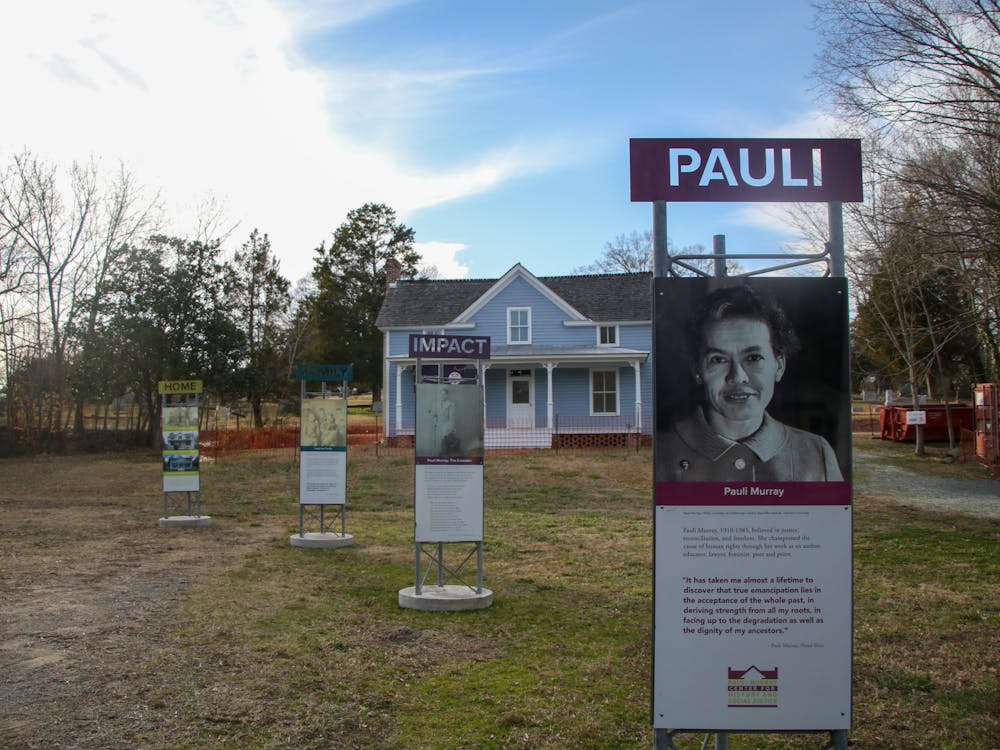Durham-raised Pauli Murray was selected as one of five women to be featured on limited-edition United States quarters as part of the 2024 edition of the American Women Quarters Program.
Throughout her career, Murray wore many hats, including poet, writer, activist and lawyer. Often ahead of her time, she is known for her pioneering work in these many fields, particularly in her advocacy for civil rights and social justice.
“I think she’s extremely unusual, and when I say that, it’s not only her unique personality,” said Rosita Stevens-Holsey, Murray’s great-niece. “I really haven’t met too many people who are an accomplished poet and writer, an author of legal briefs, a brilliant legal strategist, an ordained Episcopal priest. She did so many different things throughout her life that helped so many people and made an impact, even though very few people knew about it.”
The American Women Quarters Program is intended to celebrate the contributions of women throughout American history. The program will run for four years, commemorating up to five women each year. Murray is joined by women including Eleanor Roosevelt, Maya Angelou and Patsy Takemoto Mink who are being acknowledged by the program.
“The women honored will be from ethnically, racially, and geographically diverse backgrounds,” according to the US Mint website.
Murray's influence
Born in 1910 in Baltimore, Murray grew up in a family of six children. After the death of her parents, Murray was sent to live with her aunt in Durham and spent much of her early years in North Carolina and New York.
In New York, Murray attended Hunter College, graduating with honors. While in college, Murray wrote a great deal, getting articles and poems published in various magazines. In 1944, Murray graduated from Howard University’s law school as the only woman. Murray attended what was then the University of California’s Boalt School of Law, earning a Master of Laws degree. She went on to receive her J.S.D. from Yale University, becoming the first Black student to do so.
Murray’s decision to go to law school was inspired by her arrest for disorderly conduct in 1940. Fifteen years before Rosa Parks’ challenged the rule of segregating bus passengers, kickstarting the Montgomery Bus Boycott, Murray had done the same.
Murray also co-founded the National Organization of Women in 1966, but later stepped away from the organization, believing it was moving away from adequately addressing the issues of Black and working-class women.
In 1977, Murray became the first Black woman ordained as an Episcopal priest.
Murray’s civil rights work has had far reach. Her book “States’ Laws on Race and Color,” which outlined state laws and local ordinances on race in effect in 1950, is regarded as the “bible” of civil rights work. Murray’s law school thesis, which suggested a direct attack on the “separate but equal” doctrine, ending up influencing Thurgood Marshall’s strategy a decade later in Brown v. Board of Education, in which the Supreme Court ruled that racial segregation in public schools was unconstitutional. Former Supreme Court justice Ruth Bader Ginsburg has even cited Murray as the inspiration for Ginsberg’s amicus brief for the 1971 Supreme Court case Reed v. Reed. This brief helped the Supreme Court recognize women as victims of sex discrimination for the first time in their ruling.
Murray’s personal writings about sexual orientation and gender orientation have posthumously also become a topic of scholarly discussion.
In one of her journals, for instance, Murray, born Anna Pauline Murray before adopting the gender-neutral Pauli, asked if she was "one of nature's experiments; a girl who should have been a boy." Murray consulted doctors to ask for hormone imbalance testing and prescription of testosterone, but wrote less about gender identity after being denied gender-affirming care.
Though Murray did not identify as nonbinary or transgender, some activists and historians use “they/them” pronouns in an effort to better recognize Murray’s gender journey and identity. The Pauli Murray Center in Durham, for example, uses “she/her” pronouns to describe Murray’s early years and gender-neutral pronouns to describe later years.
Family members use she/her pronouns, and Murray did as well. In this article, The Chronicle is using Murray’s name as much as possible and following the family’s choice in pronouns.
Murray in Durham
Much of Murray’s legacy lives on in Durham, through physical and structural commemorations of her work. The Pauli Murray Center, located at Murray’s childhood home in Durham, for example, works with the John Hope Franklin Institute at Duke to educate the community on Murray’s legacy.
“Durham has really embraced Pauli Murray. When I came on a visit in 2015, we drove right past a North Carolina historic marker on the highway that said ‘Pauli Murray home,’” Stevens-Holsey reflected.
Throughout Durham, there are other installations commemorating Murray. Five murals have been created between 2007 and 2009 as a part of the Face Up: Telling Stories of Community Life collaborative public art project. The project, led by artist Brett Cook, engaged more than 1,500 city residents in dialogue and education around Murray’s work and the city’s history.
The Durham school board also voted in 2022 to name a new elementary school after Murray.
But Murray’s legacy also lives on in Durham’s residents. By Murray’s childhood home, for example, the St. Titus Episcopal Church still stands. Murray’s aunts were founding members.
Stevens-Holsey recalled visiting on a feast day, which are days in celebration of saints. Murray was designated a saint by the Episcopal Church in 2012, “not because she was the first African American female to become an Episcopal priest, but because she made a real impact on the church and for her civil rights and human rights and women’s rights work.”
Stevens-Holsey remembered that everyone was there to honor Murray and wanted to talk. If they had met Murray, they wanted to “share with us something that Pauli had said or something that had meant a great deal to them.” Others just wanted to touch Stevens-Holsey “because I carried the same family blood she did.”
“I felt like I was having an out-of-body experience,” Stevens-Holsey said. “I was just overwhelmed with pride and just completely thrilled and felt like I was almost floating on air ... I stayed until each and every person had had a chance to come and talk.”
To Stevens-Holsey, Murray’s commemoration on the U.S. quarter places her in a small group of people who have made an impact in history, but many of whom most Americans may not have heard of.
“People say to me, how could we not know about her? ... [Black women] have been left out. We’ve been ignored. We’ve been overlooked,” Stevens-Holsey said.
The quarters commemorating Murray will be distributed by 2025.
Get The Chronicle straight to your inbox
Signup for our weekly newsletter. Cancel at any time.

Jothi Gupta is a Trinity sophomore and a university news editor of The Chronicle's 119th volume.

